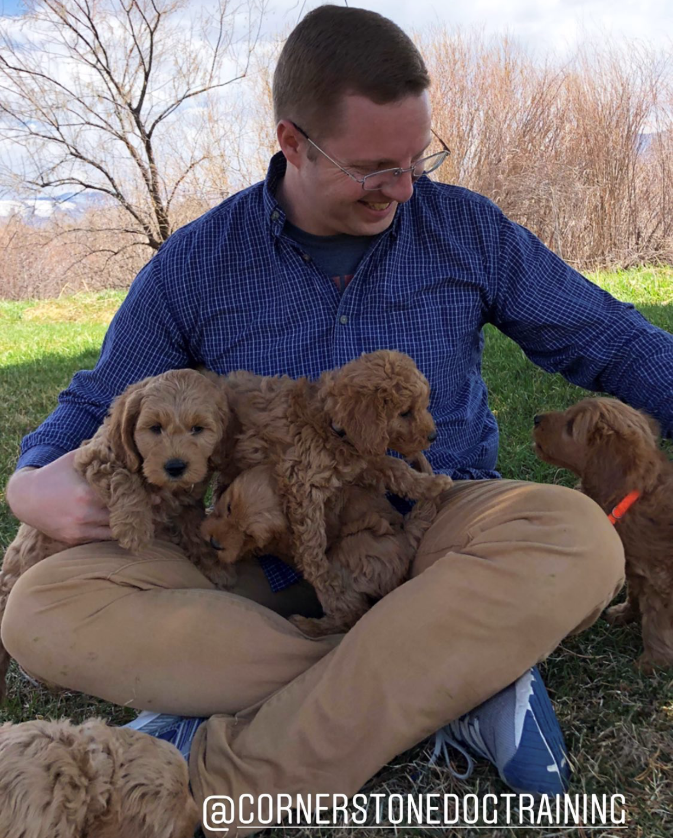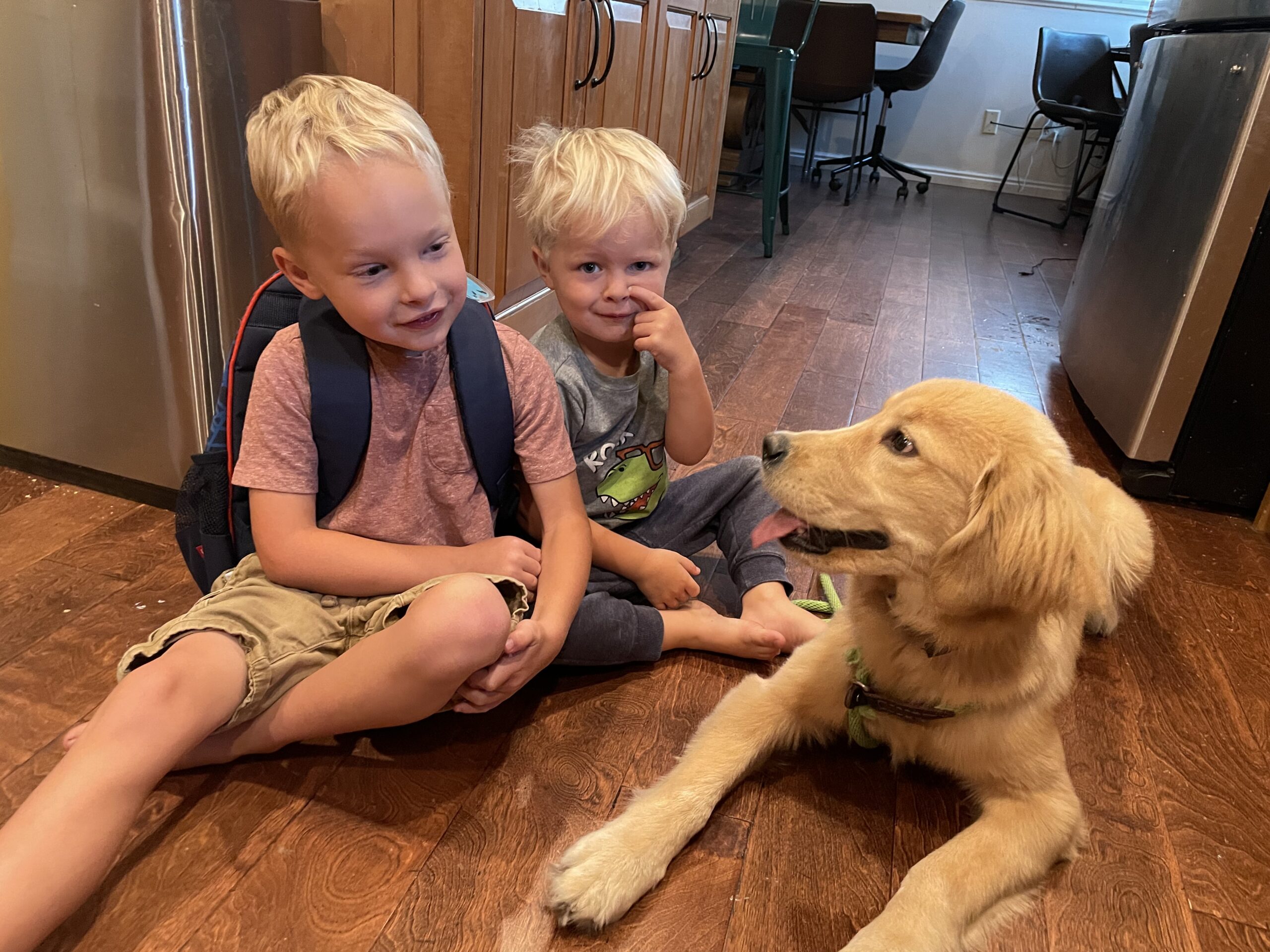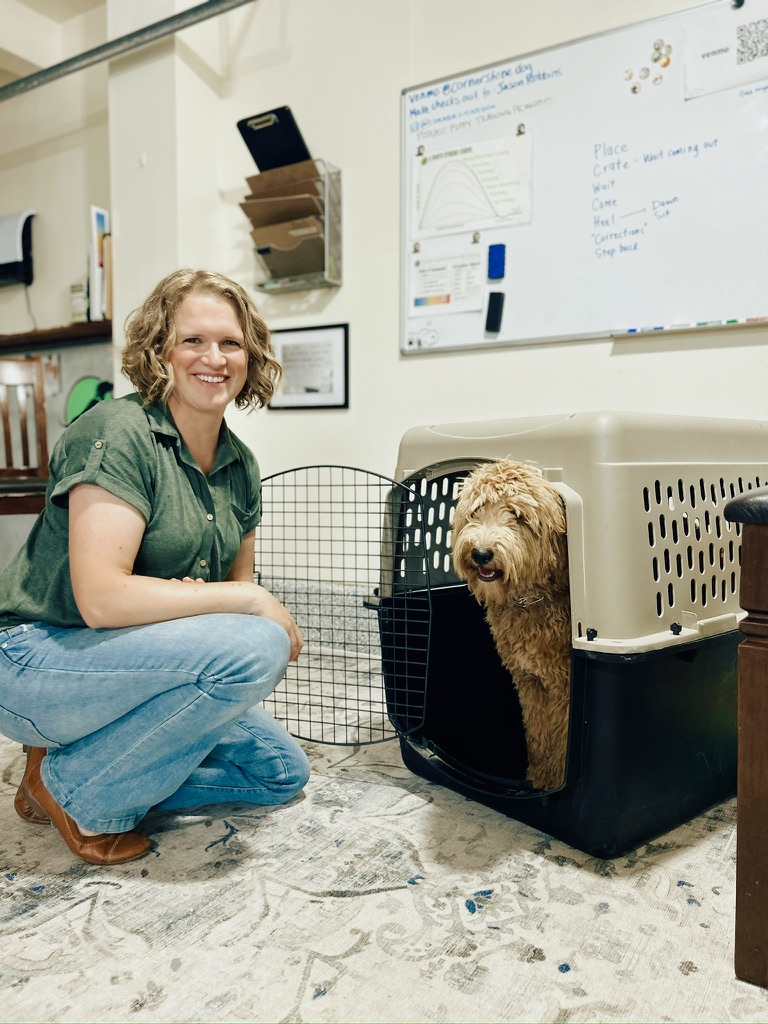Table of Contents
Bad habits can form fast. A puppy left without guidance often learns to nip, chew, jump, and demand attention in ways that feel cute now but grow into big problems later. Waiting to start training only makes these behaviors harder to undo. That’s why it’s so important to start training your puppy as soon as you bring them home.
Bringing home a new puppy is exciting—those floppy ears, tiny paws, and endless energy melt our hearts instantly. But puppies don’t come pre-programmed with good manners. Start training your puppy right away to prevent headaches and shape the calm, well-behaved companion you want.
Jason had the opportunity to showcase two golden retriever puppies from a local breeder on a local Utah news station, KSL. He was talk about why you need to start training your puppy early, and how it’s easier than you think! Watch the video here.

Start Training Your Puppy: The Early Advantage
During those first few months, puppies are like little sponges. Their brains are developing quickly, and the lessons you teach now will stick with them for life. Training at this age isn’t about harsh discipline—it’s about laying the foundation of trust, respect, and communication.
In our experience at Cornerstone Dog Training, starting early helps prevent common problems like:
- Excessive biting and nipping
- Jumping on people
- Chewing furniture and shoes
- Anxiety and hyperactivity
As we often remind new puppy parents, training is more about preventing issues than fixing them later. It’s much easier (and more fun) to shape good behavior from the start than to undo bad habits down the road. The earlier you start training your puppy, the smoother your journey will be.
What Early Training Looks Like
For puppies under 12 weeks, focus on what we call “powder puff training.” Keep it light and playful while introducing essential habits like:
- Kennel training – teaching your puppy to see the kennel as a safe, calm space
- Potty training – using a consistent schedule to set your pup up for success
- Gentle leash work – helping your puppy get used to direction without pulling
- Composure skills – calmly experiencing sounds, surfaces, and touch
It is not a bad thing to start training your puppy on basic commands earlier than 12 weeks, it may just take them a bit more to hold onto the newly learned skill.
Once your puppy hits 12 weeks, you can start layering in commands like sit, down, wait, and place. These aren’t just “tricks”—they’re building blocks of impulse control that will help your dog stay calm in everyday life. Our Puppy program is perfect for puppies who are 12 weeks and older.
Why Waiting Is Risky
Many people think they’ll wait until their puppy is older to start training. The problem? By then, habits are already forming. A nippy, wild, or anxious puppy grows into a dog that’s harder to handle, and owners often feel stressed, embarrassed, or overwhelmed.
The truth is: puppies don’t “outgrow” bad behaviors. They grow into them. Start training your puppy early to prevent future struggles and create a dog you’ll enjoy for years to come.
If you feel like your puppy has already stepped into some bad habits and is over five months old, check out our Chaos to Calm program.
Start Today—It’s Worth It
Investing time in early puppy training pays off for a lifetime. A few minutes a day builds focus, calmness, and a strong bond between you and your pup. And when your puppy grows into a dog that listens, respects boundaries, and loves being part of your family—it’s worth every bit of effort.
At Cornerstone Dog Training, we’ve seen hundreds of families transform their puppy chaos into calm confidence. If you’re wondering where to start, check out our Puppy Training Secrets program. It’s designed to guide you step-by-step through those crucial first months so you can enjoy the puppy stage—and set your dog up for success.




